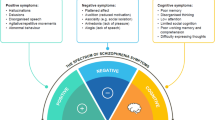Summary
Glutamate receptor-mediated excitotoxicity is linked to the activation of multiple receptors including those activated by α-amino-3-hydroxy-5-methyl-4-isoxazole propionic acid (AMPA), N-methyl-D-aspartate (NMDA), and kainate. In this study, the novel glutamate receptor antagonist, as its active isomer (3S,4aR,6R,8aR)-6-[2-(1(2)H-tetrazole-5-yl)ethyl]-decahydroisoquinoline-3-carboxylic acid ((−)LY293558) and it's ± racemate (LY215490), was examined for neuroprotectant effects against excitotoxic injury in vitro and in vivo. This agent selectively protected against AMPA and kainate injury in cultured primary rat hippocampal neurons, an in vivo rat striatal neurotoxicity model, and against agonist-evoked seizures in mice. Thus, (3S,4aR,6R,8aR)-6-[2-(1(2)H-tetrazole-5-yl)ethyl]decahydroisguinoline-3-carboxylic acid represents a novel receptor selective and potent systemically active AMPA/kainate receptor antagonist for exploring neuroprotection via non-NMDA receptor mechanisms.
Similar content being viewed by others
References
Bleakman D, Schoepp DD, Ballyk B, Bufton H, Sharpe EF, Thomas K, Ornstein PL, Kamboj RK (1996) Discrimination of GluR5 and GluR6 kainate receptor subtypes by LY293558. Mol Pharmacol 49: 581–585
Choi DW (1988) Glutamate neurotoxicity and diseases of the nervous system. Neuron 1: 623–634
Collingridge GI, Lester AJ (1989) Excitatory amino acid receptors in the vertebrate central nervous system. Pharmacol Rev 40: 145–195
Coyle JT (1983) Neurotoxic action of kainic acid. J Neurochem 41: 1–11
Gill R, Lodge D (1994) The neuroprotective effects of the decahydroisoquinoline, LY215490; a novel AMPA antagonist in focal ischemia. Neuropharmacol 33: 1529–1536
Hollmann M, Heinemann S (1994) Cloned glutamate receptors. Annu Rev Neurosci 17: 31–108
Laursen SE, Belknap JK (1986) Intracerebroventricular injections in mice. J Pharmacol Methods 16: 355–357
May PC, Robison PM (1993a) Cyclothiazide treatment unmasks AMPA excitotoxicity in rat primary hippocampal cultures. J Neurochem 60: 1171–1174
May PC, Robison PM (1993b) GYKI 52466 protects against non-NMDA receptor mediated excitotoxicity in primary rat hippocampal cultures. Neurosci Lett 152: 169–172
Moudy AM, Yamada KA, Rothman SM (1994) Rapid desensitization determines the pharmacology of glutamate neurotoxicity. Neuropharmacology 33: 953–962
Ornstein PL, Arnold MB, Augenstein NK, Lodge D, Leander JD, Schoepp DD (1993) 3SR,4aRS,6RS,8aRS-6-(2-(1H-tetrazol-5-yl)ethyl)-decahydroisoquinoline-3-carboxylic acid: a structurally novel, systemically active, competitive AMPA receptor antagonist. J Med Chem 36: 2046–2048
Pelligrino LJ, Pelligrino AS, Cushman AJ (1979) A stereotaxic atlas of the rat brain, 2nd ed. Plenum Press, New York
Rothman SM, Thurston JH, Hauhart RE (1987) Delayed neurotoxicity of excitatory amino acids in vitro. Neuroscience 22: 471–480
Rothstein JD, Jin L, Dykes-Hoberg M, Kuncl RW (1993) Chronic inhibition of glutamate uptake produces a model of slow neurotoxicity. Proc Acad Sci USA 90: 6591–6595
Schoepp DD, Azzaro AJ (1983) Effects of intrastriatal kainic acid injection on [3H]dopamine metabolism in rat striatal slices: evidence for postsynaptic glial cell metabolism by both the type A and B forms of monoamine oxidase. J Neurochem 40: 1340–1348
Schoepp DD, Salhoff CR, Hillman CC, Ornstein PL (1989) CGS-19755 and MK-801 selectively prevent rat striatal cholinergic and GABAergic neuronal degeneration induced by N-methyl-D-aspartate and ibotenate in vivo. J Neural Transm [Gen Sect] 78: 183–193
Schoepp DD, Ornstein PL, Salhoff CR, Leander JD (1991) Neuroprotectant effects of LY274614, a structurally novel systemically active competitive NMDA receptor antagonist. J Neural Transm [Gen Sect] 85: 131–143
Schoepp DD, Lodge D, Bleakman D, Leander JD, Tizzano JP, Wright RA, Palmer AJ, Salhoff CR, Ornstein PL (1995) In vitro and in vivo antagonism of AMPA receptor activation by (3S,4aR,6R,8aR)-6-[2-(1(2)H-tetrazole-5-yl)ethyl]decahydroisoquinoline-3-carboxylic acid. Neuropharmacology 34: 1159–1168
Seeburg PH (1993) The molecular biology of mammalian receptor channels. Trends Neurosci 9: 359–365
Tizzano JP, Griffey KI, Schoepp DD (1995) Induction and protection from limbic seizures in mice by mGluR subtype selective agonists. Neuropharmacology 34: 1063–1067
Author information
Authors and Affiliations
Rights and permissions
About this article
Cite this article
Schoepp, D.D., Salhoff, C.R., Fuson, K.S. et al. Selective protection against AMPA- and kainate-evoked neurotoxicity by (3S,4aR,6R,8aR)-6-[2-(1(2)H-tetrazole-5-yl)ethyl]decahydroisoquinoline-3-carboxylic acid (LY293558) and its racemate (LY215490). J. Neural Transmission 103, 905–916 (1996). https://doi.org/10.1007/BF01291781
Received:
Accepted:
Issue Date:
DOI: https://doi.org/10.1007/BF01291781




